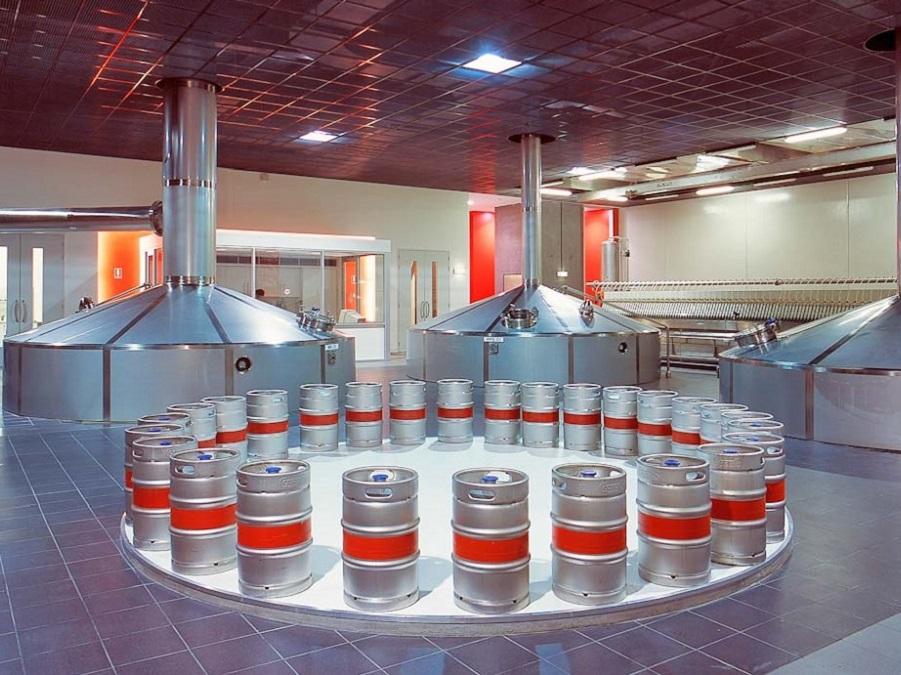Agri-Food & Wine
-
Hand-held probe for red meat quality assessment

Have you ever wondered what makes an amazing lamb roast? The answer is intramuscular fat. These are tiny deposits of oil located between muscle fibres; they are what make the meat mouth-wateringly tasty and juicy.
Measuring meat quality is important to the Australian meat industry because people will pay more for premium-grade meat. It is also critical to our export industry, where Australia has a reputation as a supplier of high-quality meat products. But until now, we haven’t been able to measure the meat quality in lamb during meat production.
Prof Robert McLaughlin and his team at the University of Adelaide have developed a probe that can measure fresh meat quality. Their imaging needle is a small, stainless-steel needle that is inserted into the meat. Inside the needle is a tiny fibre-optic imaging probe with a lens less than 0.2mm in diameter. As it is inserted, the imaging needle uses infrared light to take a high-resolution image of the muscle and intramuscular fat. Their system uses AI algorithms to automatically detect the intramuscular fat and provide a measure of the meat quality.
The team works closely with Miniprobes, a University of Adelaide spin-out company, to translate and commercialise this new technology. They have completed validation trials at several meat processing plants and plan to release commercial products in 2025.
This project is funded and supported by Meat & Livestock Australia, an Australian Research Council Linkage grant, a Commonwealth Department of Industry, Science and Resources CRC-P grant, and a Commonwealth Department of Education translational research grant through Australia's Economic Accelerator (AEA) program. Miniprobes is supported by a Seed-Start grant from the SA Govt Department of State Development. -
Plasma water for safer food

Plasma-activated water solution is an innovative antibacterial sanitiser using Cold Plasma. This technology has the potential to extend shelf life, cut food waste, reduce water usage, and, crucially, save lives.
The threat of antibiotic-resistant superbugs is imminent, predicting 10 million annual deaths by 2050. Dr Katharina Richter, PhD and her team lead the charge against superbugs. Drawing on expertise from physics, chemistry, medicine, pharmaceutical and engineering, her transdisciplinary team develops innovative antibiotic-free treatments for this global health crisis.
Plasma, the fourth state of matter, is achieved by infusing energy into a gas. The Richter lab, in partnership with Plasmatreat, has engineered a process that enriches water with ionised gas and reactive radicals, rendering it antibacterial. This innovative plasma water rapidly tackles bacteria, leaving behind pure water as radicals are consumed.Utilising advanced microscopy techniques, the team was able to measure the efficacy of plasma-activated water in combatting bacterial biofilms.
Plasma Activated Water serves a dual purpose:
1- An alternative for infection control and wound care.
2- A sustainable sanitiser for the food industry.
Unlike traditional disinfectants that leave harmful residues, plasma water breaks down into pure water after use. Plus, with proper equipment, plasma water could be generated, used, filtered and reused on-site, making this powerful technology accessible even in resource-limited regions.
This innovative plasma-activated water solution empowers a healthier world, combating superbugs and promoting food safety, all while safeguarding the environment. -
Photonics technology for real time milk quality analysis

Through the support of a new State Government initiative started in 2016, the $2.4 million South Australian Rapid Commercialisation Initiative (SARCI), IPAS members and Investigators from the ARC Centre of Excellence for Nanoscale BioPhotonics, led by Professor Mark Hutchinson, are collaborating with the dairy industry to develop sensing technologies for real time milk quality analysis.
-
New photonic analytical methods to improve the quality of brewed products

IPAS members within the Adelaide Proteomics Centre have launched a new service for breweries across Australia based on the work under a project in collaboration with Coopers Brewery Ltd, funded by the Photonics Catalyst Program.
The early detection and rapid identification of beer spoilage microorganisms is vital for breweries to monitor quality control, since the recall of distributed contaminated products is expensive and damaging to brand reputation.
-
New tools to guarantee ethical meat consumption

This project aims to create new cutting-edge chip-based technology that will be able to quantify the pain in livestock, not only the extent of current pain experienced but also a cumulative life measure of pain an animal has experienced.
IPAS and CNBP scientists have been trialling its technology in the field in pigs and hope to extend this to beef cattle in 2018.
This project has incredible implications for addressing livestock productivity and quantifying animal welfare. The team is really excited about the potential to guarantee to consumers that post culling an animal has lived a pain-free life. Not only could we know Australian livestock are clean and green but that they are also happy and healthy.
